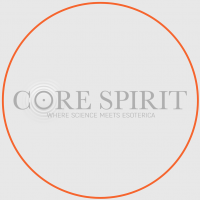There’s no way in one blogpost a to discuss the wide variety of beliefs and practices that are typically associated with New Age spirituality. New Age thinking is so diverse, so fluid, and so unique to each individual practitioner that it is probably not possible to make any general statement about the religion of the New Age that could not be challenged by someone pointing out significant exceptions to the rule. Nevertheless, a few common features dominate so much of New Age spirituality that they need to be highlighted as key characteristics of the mainstream of the movement.
Pantheism, for example, is the common belief of many, but not all, in the New Age movement. This, of course, is the view that God is everything and everything is God. (God is immanent in this view, but not transcendent.) Thus the universe itself—all of nature—constitutes the true God, so that there is no valid distinction between the Creator and creation.
Other New Agers would hold instead to panentheism, the belief that God is in everything and everything is in God. The difference here is that panentheists retain some notion of a kind of divine transcendence, so that God is thought to be Someone or (more likely) something—an impersonal force—bigger than the universe.
Either way, the New Age concept of deity is rooted in monism, not biblical monotheism. Scripture, of course, teaches that God is distinct from his creation, and the New Testament reveals Him as a Trinity—three distinct divine Persons yet one in substance. He is immanent—he pervades and sustains the universe. But He is also truly transcendent—separate from, not part of, and not subject to the limitations of, the material universe.
Monism, by contrast, claims that God and the universe are all of one essence (or one substance, or energy, or principle). In effect, monism eliminates not only the essential distinction between Creator and creation, but also every significant difference between one kind of being and another. The individual and the universe are ultimately the same. All beings, God included, are ultimately one with the universe itself.
This belief in monism is one of the key differences between New Age spirituality and classic gnosticism. Gnostics were predominantly dualists, believing that everything in the universe is reducible to two fundamental, opposite realities: mind and matter, good and evil, spirit and flesh, yin and yang, or whatever. New Age spirituality is a kind of neo-gnosticism, combining the esotericism of early gnosticism, together with handpicked beliefs and superstitions borrowed from ancient gnostic sources, but blending those with a fundamental commitment to monism.
That’s why in New Age spirituality the stress is on harmony, global unity, and the oneness of all things. If everything that has ever been or ever will be all flows from a single energy source, everything is ultimately capable of being harmonized.
Accordingly, New Age thought has little room for the concepts of evil, sin, and redemption.


 Share on bsky
Share on bsky





Read 0 comments and reply